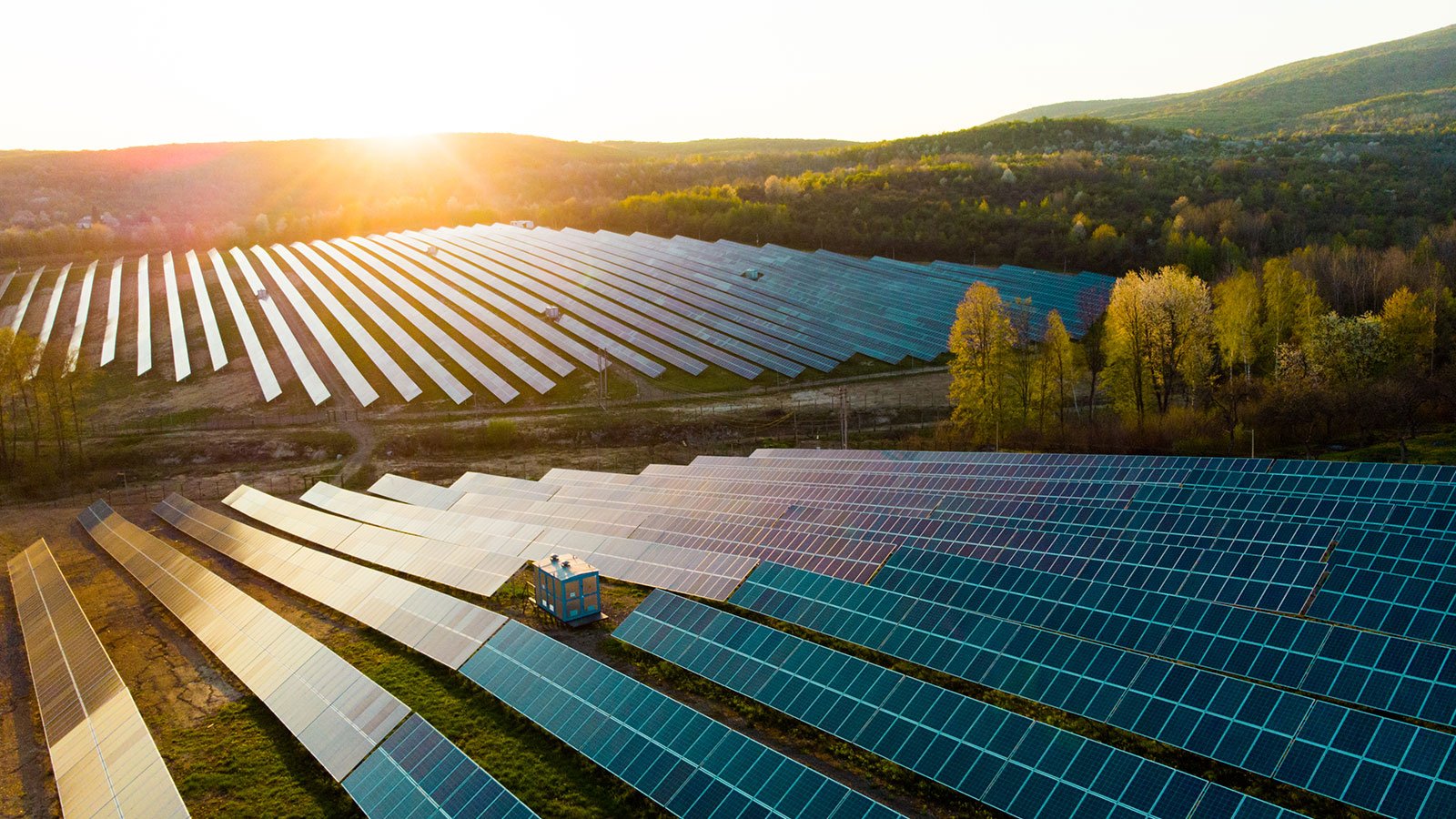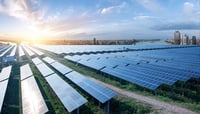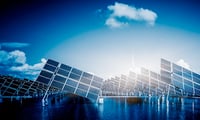Part of why the solar industry is often referred to as the solar-coaster is because of trade policies. From imposing tariffs on imports to subsidizing domestic manufacturing, governments around the world employ a number of tactics to give their local economies an edge over global competition.
Sometimes, such tactics are viewed as unfair by other countries, which can cause retaliatory actions. But trade policies are not absent of ripple effects, good and bad, felt by all parties involved, as can be observed in current-day solar industry news.
If you’ve been following the news over the past several months, you’re well aware of the lingering US Department of Commerce anti-dumping investigation triggered by a petition filed by Auxin Solar last March, which requested that the DOC review solar module imports from Chinese companies working in Cambodia, Malaysia, Thailand, and Vietnam.
Then, on June 6th, the Biden Administration announced a 24-month tariff exemption on these modules under investigation. This moratorium does not cancel the DOC investigation, and tariffs on imports coming from China remain in effect.
The DOC investigation into Southeast Asian countries is built on the premise that Chinese module manufacturers are circumventing US tariffs by moving components of solar modules through these four countries. Although the DOC has not yet made a ruling, the investigation itself has had huge ripple effects on the US solar market.
To be specific, the Solar Energy Industries Association reported that of 700 solar companies surveyed as of April 26th, 83% reported cancellations or delays of their module supply agreements. SEIA also reported a total of 318 utility-scale projects now delayed or cancelled. These projects total 51 gigawatts of solar capacity and 6 gigawatt hours of attached battery storage. These results represent only a fraction of what SEIA believes the investigation’s true impact to be.
Then on EnergyBin, a different and positive ripple effect is revealing itself, which has to do with an influx of supply, as solar companies seek to resell PV equipment from lost projects. These companies are finding success as they connect to buyers in the secondary market who have an immediate need.
Meanwhile, the solar industry ponders what effect the moratorium will have on the industry and what more needs to happen to create an economy that supports domestic manufacturers. The push to build up a solar module domestic supply chain comes from the desire to move away from dependency on China and to position the US as a first-responder to growing demand.
In this article, Thomas Hennessey, business development manager at EnergyBin, interviews Melissa Schmid, marketing communication manager, about the effects of the investigation and moratorium on the US solar market as well as the ripple effects these factors have on the secondary market. Secondary market trends are based on data from the EnergyBin exchange.
Thomas: Melissa, can you explain why this investigation has caused such a disruption in the US solar market? Isn’t such an investigation a sign that our government supports a fair playing field for domestic module manufacturers?
Melissa: The investigation has mainly caused a lot of uncertainty among investors, who view it as a big political risk that can easily be avoided by moving their investments to other countries where solar development is thriving.
The uncertainty has revolved around the potential DOC ruling that could have imposed retroactive tariffs of 50-250% on solar module imports from Cambodia, Malaysia, Thailand, and Vietnam dating all the way back to the initial petition filing date.
With over 80% of US imports coming from these countries, such tariffs would have completely unhinged project budgets.
Thankfully, retroactive tariffs are no longer a threat as of President Joe Biden’s announcement on June 6th.
You bring up an important point about the investigation as a necessary process to ensure a fair playing field for domestic manufacturers. In fact, tariffs on Chinese solar modules have been in place since 2012 as a way to promote domestic production and to prevent China from undercutting local manufacturers on price.
In 2018, former President Donald Trump imposed additional tariffs on certain solar products from China. Then last February, President Biden extended these tariffs for another four years.
New tariffs under consideration by the Department of Commerce would be in addition to existing tariffs. Imposing tariffs is one tactic governments can use to level the playing field for domestic companies to compete with their global competitors.
However, a number of economists argue that tariffs alone aren’t enough to jump-start and ramp up domestic production and therefore should be paired with subsidies and other incentives to make a significant impact.
Thomas: Ok, that makes a lot of sense. You mentioned the threat of new tariffs as a result of a future DOC ruling and that retroactive tariffs no longer pose a threat thanks to President Biden’s moratorium announced on June 6th.
Would you summarize the moratorium and share why this is big news for the US solar market?
Melissa: The Biden Administration’s moratorium is a 24-month tariff exemption on solar modules imported from Cambodia, Malaysia, Thailand, and Vietnam. Essentially what this means is that no solar tariffs, regardless of a future DOC ruling, can be imposed on these imports for the next two years. It also eliminates the possible imposition of retroactive tariff collection.
Additionally, President Biden invoked the Defense Production Act as a means to prioritize domestic production via the allocation of materials, services, and facilities for the purpose of national defense, which I interpret as a bold step toward energy security and resiliency.
The moratorium is big news for the US solar market because it provides certainty for the next two years with respect to the absence of tariffs on imports from Southeast Asia. It also helps to kick-start domestic production.
Speaking of a domestic supply chain… Shortly after Biden’s announcement, REC Silicon and Ferroglobe announced that they have signed a memorandum of understanding (MOU) to develop an end-to-end US solar supply chain. Their plan comprises mining raw silicon, making polysilicon, producing solar cells, and finally fully assembling modules. The Hanwha Group is a major investor in this effort. REC’s Moses Lake factory in Washington is scheduled to open at the end of 2023.
In addition to budgetary priorities flowing from the Defense Production Act, private investment will certainly speed up efforts to develop a domestic supply chain.
Thomas: That’s interesting. I understand that this 24-month tariff exemption is a temporary effort and that the DOC investigation will continue. The DOC could still pass a ruling that imposes tariffs on solar module imports from Southeast Asia, but they would not come into effect until after the 24-month moratorium period. This seems like good news for PV module pricing.
Can we expect to see module prices trend downward anytime soon? What other factors have been pushing prices up?
Melissa: Unfortunately, I don’t believe we’ll see module prices decline anytime this year. There are too many factors working against low prices. We can partially blame escalated prices on the aftereffects of Covid that exposed major vulnerabilities within supply chains across multiple industries.
Today, we’re dealing with transportation backlogs and the unavailability of shipping containers, spiking prices in raw materials, such as polysilicon, and labor shortages, which cause factory closures and partial operations as well as project construction delays and cancellations.
As REC plans to open its new polysilicon factory in late 2023, forecasters expect prices to begin to decline as supply increases. However, numerous other supply chain constraints need to be resolved as well.
For example, the global semiconductor shortage hinders multiple industries – automobiles, computers, medical devices, and of course, solar inverters. Even if developers and installers are successful in acquiring modules, they may have a challenge sourcing inverters and other components.
Add to all of this the rapid demand for solar energy, and you have the perfect storm.
Thomas: Demand is booming. In spite of inflated prices, big construction announcements are cropping up nearly every day. In fact, the US Department of the Interior announced in June that they will cut in half rents and fees for solar projects on public lands. They plan to approve around 29.6 gigawatts of solar projects between 2022 and the end of 2025.
I want to switch gears and chat about how all of these factors affect the secondary solar market. Over the past several months, we’ve seen activity on the EnergyBin solar equipment exchange increase substantially.
What is the state of the secondary market in the US?
Melissa: If anything, the secondary market is being propelled by the factors we’ve been discussing. For example, solar companies are discovering that EnergyBin can help as an alternative outlet for buying and selling PV equipment. We’ve seen more and more solar companies engage on the platform who are looking for immediate solutions. These companies include developers and EPCs, contractors, installers, and O&Ms as well as resellers and wholesale solar equipment brokers. Some are acting as sellers to liquidate solar equipment from cancelled projects. Others are using EnergyBin as an alternative source to buy equipment.
The bulk of material being listed for resale is flowing from cancelled or delayed projects. Sellers are finding success via resale, and the redistribution of these goods is helping to prevent additional cancellations.
We’ve seen huge lots of solar panels posted for resale, many of which are new with warranty. To give you a few examples of big lot sizes, one of our members posted 20,000 550-watt modules for resale. This particular lot is one of the highest efficiency module lots posted on EnergyBin.
Another member posted 40,000 405-watt modules for resale, which amounts to 16 megawatts. The seller noted that the lot was available for immediate shipment from Florida. Modules from both of these examples are Tier 1 brands.
An additional trend on the exchange is an influx of buyers looking for inverters. Many buyers need replacement inverters. We’re also seeing buyers’ requests for quotes for inverters for new construction.
In fact, one of our newest members, an installer based in Washington, sent an RFQ to a reseller in California for five SolarEdge inverters. The reseller had uploaded their inventory for sale on EnergyBin, which led to the installer finding the part via product search. They were able to complete the transaction and ship within one week.
Some buyers are specifically looking for inverter repair services, which is creating new business opportunities in this sector as well.
Thomas: I’ve also worked with well-known distributors in the industry who have buying needs. Due to manufacturers’ backlogs, many distributors have not been able to fulfill their customers’ orders. They are looking to the secondary market as an alternative sourcing option.
What price trends are you noticing on EnergyBin with respect to solar modules?
Melissa: I’m definitely noticing an upward trend, which is mainly spurred by all the economic factors we’ve been discussing.
On average, Mainstream modules are around $0.43 to $0.48 per watt. High efficiency, including Bifacial, modules are coming in right around $0.50 to $0.60 per watt. All Black modules are ranging from $0.60 to $0.85 per watt.
Compared to December spot prices of $0.35 for High Efficiency, $0.48 for Bifacials, and $0.36 per watt for Mainstream, prices have increased by 20-30%. This range is in line with what the US solar market at large has experienced this year.
A note about All Black modules… I’ve noticed sellers racing to liquidate LG inventory since the company announced last February that it is exiting the global solar panel business. LG’s reason for doing so is because of increased material and logistics costs, as well as severe supply constraints.
If you’re a buyer looking for LG modules, you may want to check on EnergyBin. Be aware that as supply decreases, prices increase. I’m seeing LG prices range from $0.67 to as much as $1.14 per watt. Sellers aren’t pricing other brands as high.
I’m hopeful that prices across the board will decrease as inflation is reeled in and as supply chain bottlenecks ease. In theory, the tariff exemption should certainly help stabilize module prices over the next two years.
Thomas: What can solar companies do to minimize their risk?
Melissa: That’s a tricky question because I think the answer lies in what makes the best sense for a company’s specific business goals. I would advise every solar company who is engaged in buying and/or selling solar equipment to incorporate the secondary market into your overall business strategy. If you’re using EnergyBin, check the exchange daily. Watch prices, and aim to buy low, sell high.
Thomas: I recommend that as well. I’ve worked with many solar companies who have been able to minimize their losses from cancelled projects by liquidating their solar equipment. EnergyBin has also been a useful tool for buyers who are looking for material. The platform provides a window into product availability, which changes every day.
The bottom line is… No matter what’s going on in the industry, the secondary market helps to weather the ups and downs.
Learn more about our wholesale trading exchange at EnergyBin.com.

 15 Resources for Your PV Repair, Resale, & Recycling Toolkit
15 Resources for Your PV Repair, Resale, & Recycling Toolkit The Ultimate Guide to Buying Wholesale Solar Equipment
The Ultimate Guide to Buying Wholesale Solar Equipment The Ultimate Guide to Selling Wholesale Solar Equipment
The Ultimate Guide to Selling Wholesale Solar Equipment